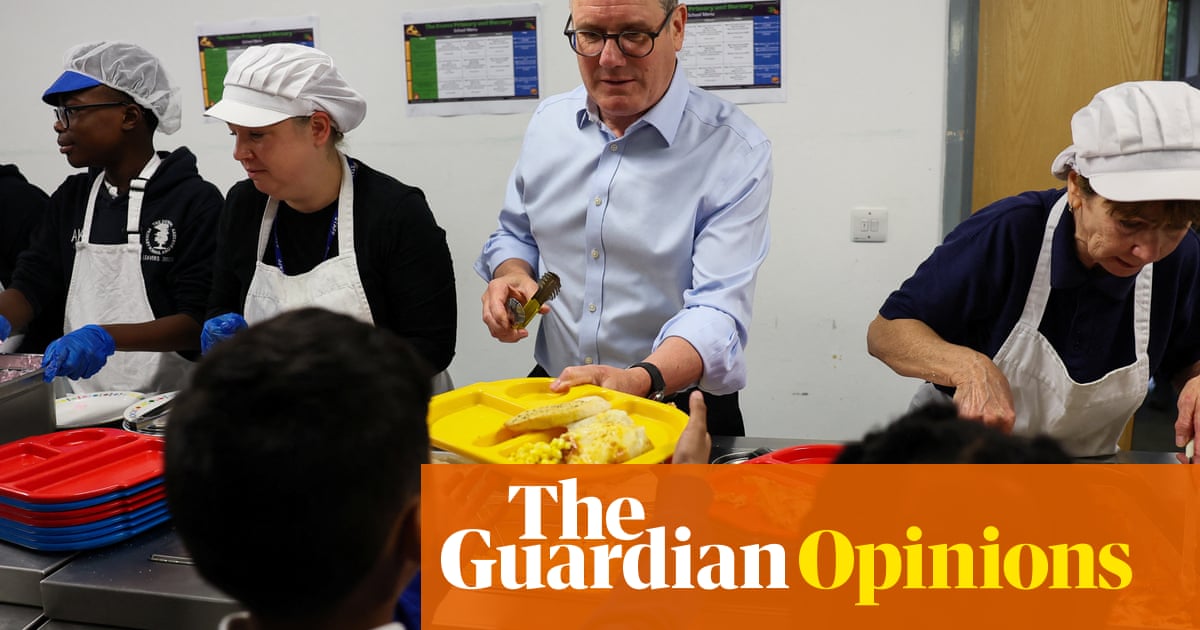It was Ellen Wilkinson, education minister in the Attlee government, whoannounced in 1946that free school dinners would be introduced, along with free school milk, at the same time as child benefit. No doubt Rachel Reeves, who has a picture of Wilkinson on thewall of her office, is aware of this – and also that the Treasury subsequently decided the policy was unaffordable. The meals were subsidised instead.
Despite these initial charges, and later price rises, poorer children did gain, and keep, an entitlement to free school meals. The announcement last week that this is being extended in England to all those whose parents or carers claim universal credit – rather than restricted to families with incomes lower than £7,400 – should be welcomed by allobjectors to child poverty. Being assured of a hot lunch in the middle of the school day makes pupils’ lives better. Children cannot be expected to learn when they do not have enough to eat. This might sound obvious, but is easily forgotten. Scotland and Northern Ireland already have more generous rules in place.
Ministers clearly hope that this will be a popular policy, as they prepare forthis week’s spending reviewand the reaction to it.Hunger in schoolsis disturbingly widespread and the enthusiastic reception to Marcus Rashford’s campaign on school food showed that this is a cause the public warms to. Long before last year’s election, breakfast clubs were a flagship Labour policy. Now they are part of Bridget Phillipson’s schools bill.
But as with breakfast clubs, which some schools have said that theycannot deliveron the budget provided, good intentions must not mask inadequate finances. Already, the Institute for Fiscal Studies haschallenged the government’s claimthat 100,000 children will be lifted out of poverty. It said this can only be expected over the long term. And some children already entitled to free meals do not receive them – promptingcalls for auto-enrolment.
Another challenge concerns food quality, which has been eroded by a series of below-inflation funding increases. Free lunches are already offered to all pupils up to the age of seven. But a recently announced3p risein the subsidy towards these (from £2.58 to £2.61 per meal), was rightly criticised for forcing school leaders to either reduce their lunch offer, or make cuts elsewhere. The average actual cost of a school lunch is £3.16.
Twenty years after the Channel 4 television seriesJamie’s School Dinnersturned kitchens’ reliance on junk food into a national issue, it is depressing that resources remain so meagre. Childhood obesity andpoor dental healthare serious problems, particularly in poorer parts of the country where treatment is harder to access. Ms Phillipson and her colleagues should be more ambitious about quality as well as quantity. Improvements could contribute to children’s overall wellbeing, as well as nutrition. Meals are social events, not just refuelling stops.
But step back from the table and the bigger picture comes into view. Child poverty, of which poor diets are a symptom, cannot be tackled by schools alone. Reducing it means raising family incomes through the benefits system – as well as trying to boostwage growth. Earlier this year, someLabour MPs warnedthat school food risked becoming a sop. That danger has not gone away. The latest announcement on free lunches is good news so long as it does not distract from efforts to remove the two-child benefit cap, or weaken the wider campaign against child poverty.
